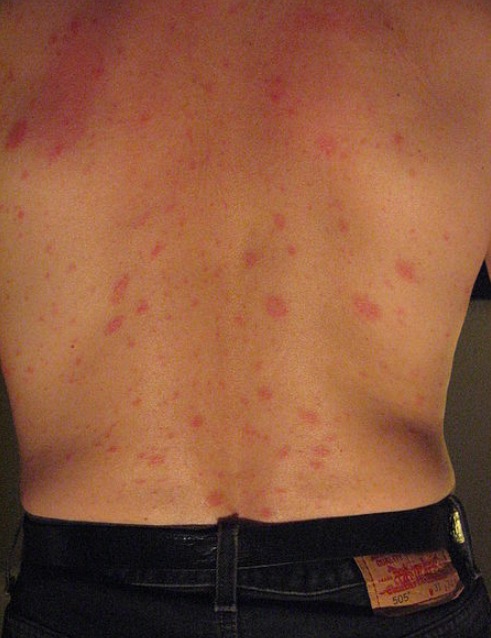Playlist
Show Playlist
Hide Playlist
Pityriasis Rosea in Children
-
Slides PityriasisRosea Pediatrics.pdf
-
Download Lecture Overview
00:00 In this lecture, we're going to discuss Pityriasis Rosea. This is a very common condition that is very unique and tends to show up on tests so it's simple to learn but should be pretty high-yield. 00:16 Basically, it's a rash that is acute, benign and self-limiting. Patients will have a pink and scaly diffuse rash and you can see an example of it right here. It's of, we believe, viral origin but the etiology isn't totally understood. What's key about this rash is they have an original first spot called a Herald patch. This is a round circumscribed lesion that shows off right away by itself. 00:50 It's usually 2 to 5 cm and it's often mistaken for something else like tinea corporis. However, after the Herald patch has been there for a while, perhaps somewhere between 2 days and 3 weeks later, a patient develops a secondary exanthem which is small, dull, pink macules on the trunk, arms and thighs. One way that we classically think of that second rash as looking as having a cigarette paper or white scaly appearance to it also and this is key, it has a Christmas tree like pattern which you can almost see in this picture. It's sort of coming down in lines across the back. That's not to be mistaken for secondary syphilis. So secondary syphilis appears on palms and soles and is very different but can appear in children of this age and can also look like that Christmas tree type pattern. So sometimes patients with secondary syphilis are misdiagnosed as having pityriasis rosea. Something to know about but most important is to remember the fir tree pattern of pityriasis rosea. In general, this rash is asymptomatic but it can be a little bit itchy. What's important to tell families is it can persist for a long time, even a few months. So families just need to know this is going to be there for a while. So generally the rash resolves without treatment within 4 to 8 weeks. Generally, we can provide patients with skin lubrication or topical antipruritics or systemic antihistamines if they're having a little bit of itchiness. Patients may have some post inflammatory hypopigmentation or hyperpigmentation. 02:42 There's not a lot we can do about that and in severe cases we may try systemic steroids but that would be very unusual and you shouldn't empirically think of providing these patients with steroids. So that's a quick summary of Pityriasis Rosea in Children. Thanks for your time.
About the Lecture
The lecture Pityriasis Rosea in Children by Brian Alverson, MD is from the course Pediatric Dermatology.
Included Quiz Questions
Which of the following is a key finding in a patient with pityriasis rosea?
- Herald patch
- Lesions on the palms and soles
- Mucous membrane involvement
- Genital papulovesicular involvement
- Numerous nevi on the nape of neck
Which of the following characteristics is consistent with the secondary exanthema seen in pityriasis rosea?
- Mainly involving the trunk
- Severely pruritic
- Followed by a herald patch
- Ulcerative
- Associated with spikes of fever
Customer reviews
5,0 of 5 stars
| 5 Stars |
|
1 |
| 4 Stars |
|
0 |
| 3 Stars |
|
0 |
| 2 Stars |
|
0 |
| 1 Star |
|
0 |
Excellent lecture as usual, very well described and easy to remember.




